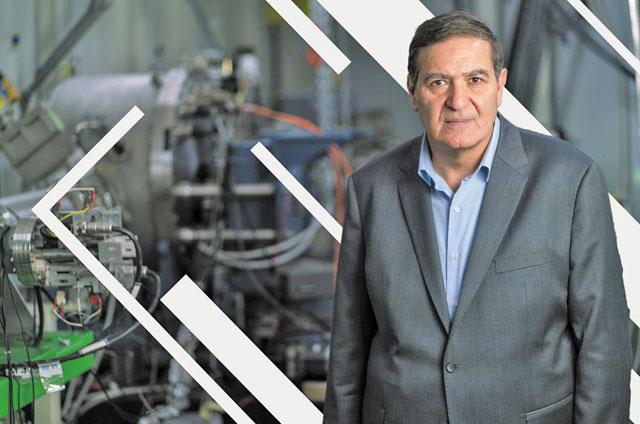You are here
Toukan named as one of 10 people who contributed to global science in 2017
By Mohammad Ghazal - Dec 19,2017 - Last updated at Dec 20,2017

Khaled Toukan, head of the Synchrotron-light for Experimental Science and Application in the Middle East (SESAME), was named as one of the 10 people who mattered in science and contributed to global science in 2017, according to Nature's 10, a prestigious Nature Scientific Journal (Photo courtesy of Nature)
AMMAN — Khaled Toukan, head of the Synchrotron-light for Experimental Science and Application in the Middle East (SESAME), was named as one of the 10 people who mattered in science and contributed to global science in 2017, according to Nature’s 10, a prestigious nature scientific journal.
Toukan was recognised for his role in the opening of SESAME, the Middle East’s first synchrotron, after 20 years of development, according to the magazine.
It is the first major international research centre of its kind in the Middle East, and puts the region on the world science map, the magazine indicated.
“This is a great achievement for Jordan as the opening of the SESAME places Jordan on the world map of science and a recognition by such a prestigious specialised magasine is a great news for Jordan too,” Toukan told The Jordan Times over the phone on Tuesday.
“We started SESAME almost with no budget and there were many challenges including regional conditions, but it is finally open and operational. This is a world-class recognition of a state-of-the-art technology and facility in the Kingdom and of the country’s innovation in the field of science,” Toukan said.
Toukan, a venerated physicist, former university president and three-time government minister, has been a steady shepherd throughout time, the magazine indicated.
He was one of a handful of people crucial to the project, said Christopher Llewellyn Smith, a physicist at the University of Oxford, UK, who chaired the project’s governing council from 2008 to 2017: “Without him, SESAME wouldn’t have happened.”
The $110-million facility, based outside Amman, circulates high-energy electrons around a 133-metre ring, creating intense radiation that can be used to image molecules, artefacts and myriad other objects.
But the machine is not only a photon source, Toukan said: “It’s light in a sea of conflict.”
Over the years, Toukan soothed political tensions between SESAME’s partners, helping ensure the project’s financial survival when member states’ contributions fell short, according to the magazine.
He recently persuaded the Jordanian government to use European Union funds to build a $7-million solar power plant for SESAME, which will halve running costs that might otherwise cripple the project, Smith said.
Since 2003, Toukan has worked for SESAME around other jobs and without pay. But he always made time for the project, said Maciej Nalecz, biochemist at the Polish Academy of Sciences in Warsaw.
Nalecz, who headed the division at UNESCO that oversaw SESAME’s formation, said: “When I called, he always answered.”
In his current role as chair of Jordan’s Atomic Energy Commission, Toukan supervised the start-up of a second historic project — the country’s first nuclear reactor for research.
Other names on the list include Chinese physicist Pan Jianwei for a quantum teleport and astronomer Marica Branchesi. A member of the Virgo collaboration, which operates a gravitational wave detector near Pisa, Italy, Branchesi helped bring together more than 3,500 researchers who captured the collision of two neutron stars in detail, according to Nature.
Related Articles
AMMAN — Bulgarian President Rumen Radev on Saturday visited Synchrotron-Light for Experimental Science and Applications in the Middle East (
A delegation from the European Commission on Tuesday visited Synchrotron-light for Experimental Science and Application in the Middle East (SESAME) and had a first-hand look at the project.
AMMAN — Italian Ambassador Fabio Cassese on Monday inaugurated a laboratory dedicated to cultural heritage at the Synchrotron-light for Expe
















